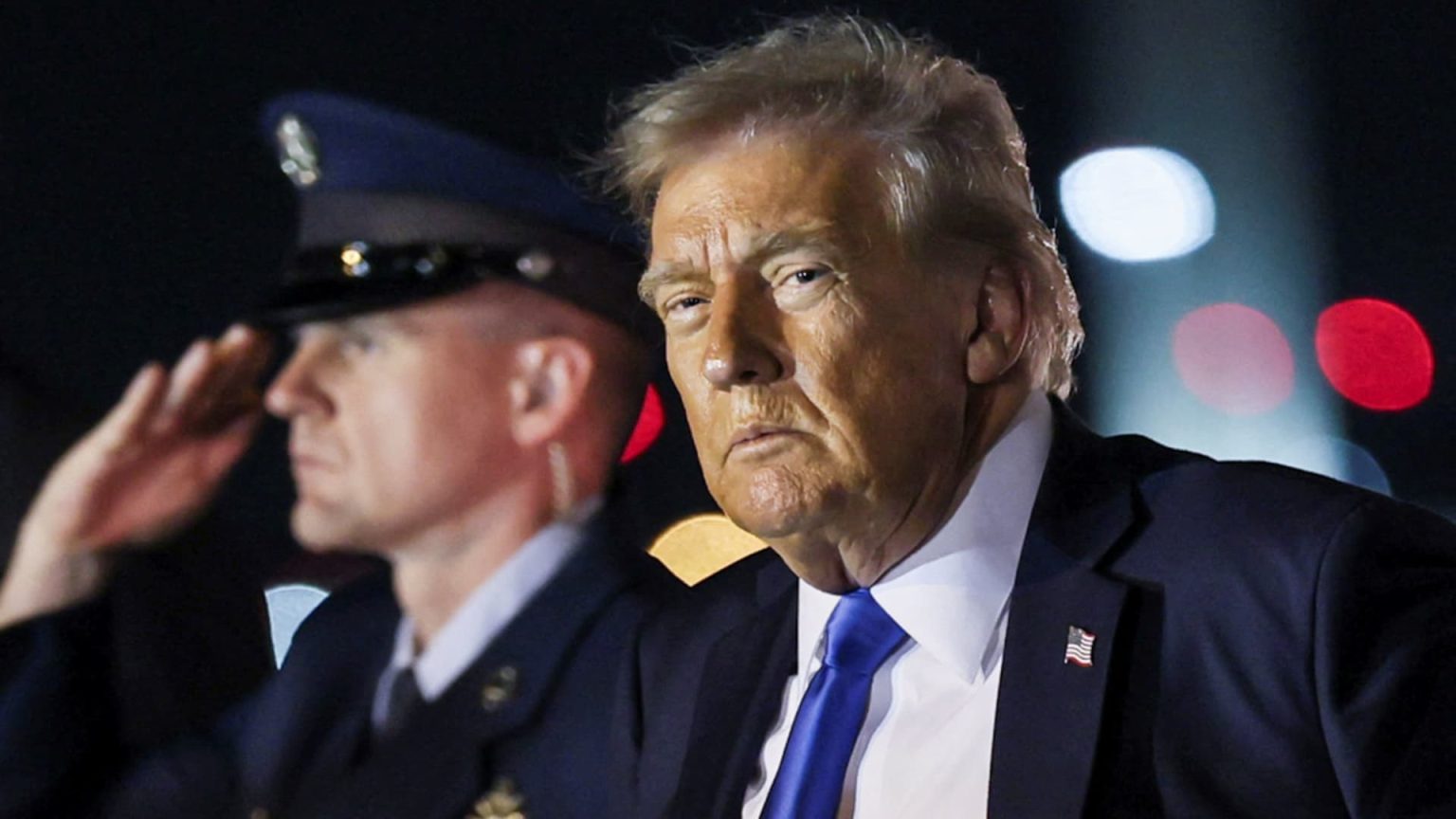In a recent interview, President Donald Trump confirmed he will step down at the end of his second term, dismissing suggestions of a third presidential run due to existing constitutional barriers. During his conversation on NBC News’ “Meet the Press,” Trump highlighted potential successors within the Republican Party, including Vice President JD Vance and Secretary of State Marco Rubio. This acknowledgment marks a significant moment as Trump focuses on his current term while laying groundwork for future GOP leadership.
| Article Subheadings |
|---|
| 1) Trump’s Decision on a Third Term |
| 2) The Constitutional Barrier |
| 3) Names in the GOP Spotlight |
| 4) Focus on Immediate Challenges |
| 5) Trump’s Role in Future Elections |
Trump’s Decision on a Third Term
During an exclusive interview with NBC News, President Donald Trump firmly stated that he would conclude his presidency at the end of his second term. The interview aired on a Sunday, where Trump presented his views on potential future candidates who could embody the MAGA agenda after his departure from office. As he discussed his own future, Trump remarked, “I’ll be an eight-year president, I’ll be a two-term president.” This declaration reflects his intention to not pursue a controversial third term, despite the encouragement he has received from various allies within his party to consider such a possibility.
The Constitutional Barrier
The Constitution’s 22nd Amendment is pivotal in shaping the conversation around presidential term limits. It clearly states, “No person shall be elected to the office of the President more than twice.” In his interview, Trump acknowledged the reality of this restriction: “It’s something that, to the best of my knowledge, you’re not allowed to do.” The process required to amend this constitutional barrier is daunting, as it would necessitate significant legislative support and ratification by a majority of states, making Trump’s speculation of a potential third term exceedingly unlikely. Current Republican lawmakers, such as Rep. Andy Ogles from Tennessee, have introduced resolutions seeking to change this term limit, although substantial progress remains absent.
Names in the GOP Spotlight
As Trump considers his legacy, he has put a spotlight on several rising figures in the Republican Party who he believes could carry on his initiative. He specifically named Vice President JD Vance and Secretary of State Marco Rubio as key players in the future of the GOP. Trump suggested that Vance is positioned well for a potential presidential run, particularly in a Republican primary, remarking, “It could very well be” regarding Vance’s prospects. This attention emphasizes the importance of succession in politics and showcases Trump’s confidence in nurturing the next generation of Republican leaders.
Focus on Immediate Challenges
While Trump discussed future leaders, he remains focused on the pressing challenges facing the GOP, particularly in the context of the upcoming 2026 midterm elections. Trump noted that maintaining control of Congress will require a well-coordinated effort, especially given historical trends where the party that holds the presidency often loses seats in the midterm context. Acknowledging the intense scrutiny his administration has faced regarding issues like tariffs and governance, Trump asserted that he plans to remain an active force within the party, utilizing his fundraising capabilities to assist Republican candidates in their campaigns.
Trump’s Role in Future Elections
Despite a decline in his approval ratings in recent months, largely affected by economic policies and controversies, Trump is intent on utilizing his influence to shape the electoral landscape. He indicated a commitment to playing a “very active” role in the upcoming midterm cycle, seeking to turn around what he referred to as historical trends that have often worked against the incumbent party. His approach underscores a strategy to not only secure Republican victories in the midterms but also to ensure a smooth transition to new leadership after his departure from the presidency.
| No. | Key Points |
|---|---|
| 1 | Trump confirms he will not seek a third term. |
| 2 | The 22nd Amendment restricts presidents to two terms. |
| 3 | Vance and Rubio are identified as future GOP leaders. |
| 4 | Trump emphasizes the importance of the upcoming midterm elections. |
| 5 | Trump plans to raise funds for Republican candidates in the midterms. |
Summary
President Trump’s recent remarks on his future within the political sphere reflect a strategic pivot towards consolidation and leadership transition in the Republican Party. By naming potential successors and outlining his focus on upcoming elections, Trump demonstrates a commitment to the GOP’s long-term health while acknowledging the constraints of the current political framework. This dynamic sets the stage for ongoing discussions about party direction and leadership in the years to come.
Frequently Asked Questions
Question: What did Trump say about his potential third term?
Trump has confirmed he will not seek a third term, stating, “I’ll be an eight-year president, I’ll be a two-term president.” He acknowledges the constitutional barriers that prevent him from pursuing this possibility.
Question: Who are the potential successors Trump highlighted?
Trump mentioned Vice President JD Vance and Secretary of State Marco Rubio as prominent figures in the Republican Party who could lead after his presidency.
Question: What is the significance of the 22nd Amendment?
The 22nd Amendment of the U.S. Constitution limits presidents to two terms in office, which plays a crucial role in discussions related to Trump’s potential third term, with any amendments to this law being highly complex and realistically unlikely.


